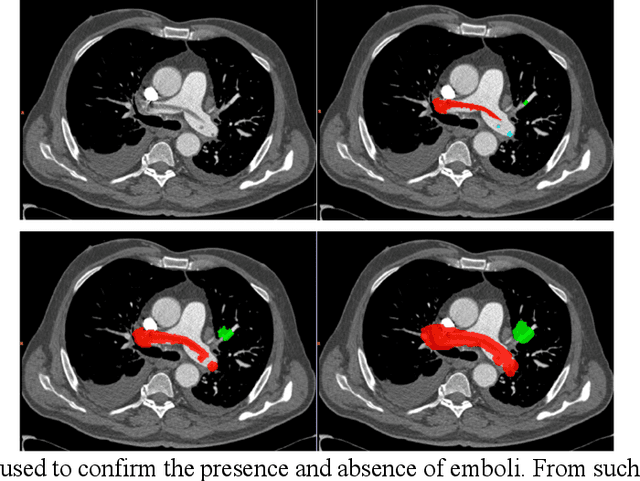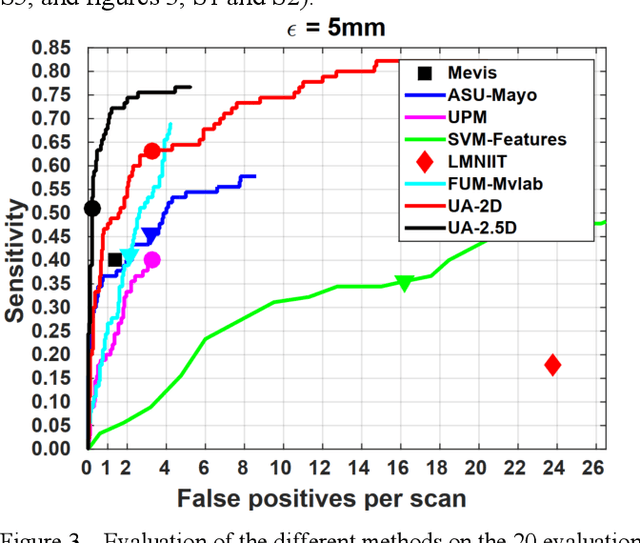Miguel Cazorla
UKDM: Underwater keypoint detection and matching using underwater image enhancement techniques
Apr 15, 2025Abstract:The purpose of this paper is to explore the use of underwater image enhancement techniques to improve keypoint detection and matching. By applying advanced deep learning models, including generative adversarial networks and convolutional neural networks, we aim to find the best method which improves the accuracy of keypoint detection and the robustness of matching algorithms. We evaluate the performance of these techniques on various underwater datasets, demonstrating significant improvements over traditional methods.
CADDI: An in-Class Activity Detection Dataset using IMU data from low-cost sensors
Mar 04, 2025Abstract:The monitoring and prediction of in-class student activities is of paramount importance for the comprehension of engagement and the enhancement of pedagogical efficacy. The accurate detection of these activities enables educators to modify their lessons in real time, thereby reducing negative emotional states and enhancing the overall learning experience. To this end, the use of non-intrusive devices, such as inertial measurement units (IMUs) embedded in smartwatches, represents a viable solution. The development of reliable predictive systems has been limited by the lack of large, labeled datasets in education. To bridge this gap, we present a novel dataset for in-class activity detection using affordable IMU sensors. The dataset comprises 19 diverse activities, both instantaneous and continuous, performed by 12 participants in typical classroom scenarios. It includes accelerometer, gyroscope, rotation vector data, and synchronized stereo images, offering a comprehensive resource for developing multimodal algorithms using sensor and visual data. This dataset represents a key step toward scalable solutions for activity recognition in educational settings.
DIPSER: A Dataset for In-Person Student1 Engagement Recognition in the Wild
Feb 27, 2025Abstract:In this paper, a novel dataset is introduced, designed to assess student attention within in-person classroom settings. This dataset encompasses RGB camera data, featuring multiple cameras per student to capture both posture and facial expressions, in addition to smartwatch sensor data for each individual. This dataset allows machine learning algorithms to be trained to predict attention and correlate it with emotion. A comprehensive suite of attention and emotion labels for each student is provided, generated through self-reporting as well as evaluations by four different experts. Our dataset uniquely combines facial and environmental camera data, smartwatch metrics, and includes underrepresented ethnicities in similar datasets, all within in-the-wild, in-person settings, making it the most comprehensive dataset of its kind currently available. The dataset presented offers an extensive and diverse collection of data pertaining to student interactions across different educational contexts, augmented with additional metadata from other tools. This initiative addresses existing deficiencies by offering a valuable resource for the analysis of student attention and emotion in face-to-face lessons.
Escaping The Big Data Paradigm in Self-Supervised Representation Learning
Feb 25, 2025Abstract:The reliance on large-scale datasets and extensive computational resources has become a major barrier to advancing representation learning in vision, especially in data-scarce domains. In this paper, we address the critical question: Can we escape the big data paradigm in self-supervised representation learning from images? We introduce SCOTT (Sparse Convolutional Tokenizer for Transformers), a shallow tokenization architecture that is compatible with Masked Image Modeling (MIM) tasks. SCOTT injects convolutional inductive biases into Vision Transformers (ViTs), enhancing their efficacy in small-scale data regimes. Alongside, we propose to train on a Joint-Embedding Predictive Architecture within a MIM framework (MIM-JEPA), operating in latent representation space to capture more semantic features. Our approach enables ViTs to be trained from scratch on datasets orders of magnitude smaller than traditionally required --without relying on massive external datasets for pretraining. We validate our method on three small-size, standard-resoultion, fine-grained datasets: Oxford Flowers-102, Oxford IIIT Pets-37, and ImageNet-100. Despite the challenges of limited data and high intra-class similarity, frozen SCOTT models pretrained with MIM-JEPA significantly outperform fully supervised methods and achieve competitive results with SOTA approaches that rely on large-scale pretraining, complex image augmentations and bigger model sizes. By demonstrating that robust off-the-shelf representations can be learned with limited data, compute, and model sizes, our work paves the way for computer applications in resource constrained environments such as medical imaging or robotics. Our findings challenge the prevailing notion that vast amounts of data are indispensable for effective representation learning in vision, offering a new pathway toward more accessible and inclusive advancements in the field.
CHIRLA: Comprehensive High-resolution Identification and Re-identification for Large-scale Analysis
Feb 10, 2025Abstract:Person re-identification (Re-ID) is a key challenge in computer vision, requiring the matching of individuals across different cameras, locations, and time periods. While most research focuses on short-term scenarios with minimal appearance changes, real-world applications demand robust Re-ID systems capable of handling long-term scenarios, where persons' appearances can change significantly due to variations in clothing and physical characteristics. In this paper, we present CHIRLA, Comprehensive High-resolution Identification and Re-identification for Large-scale Analysis, a novel dataset specifically designed for long-term person Re-ID. CHIRLA consists of recordings from strategically placed cameras over a seven-month period, capturing significant variations in both temporal and appearance attributes, including controlled changes in participants' clothing and physical features. The dataset includes 22 individuals, four connected indoor environments, and seven cameras. We collected more than five hours of video that we semi-automatically labeled to generate around one million bounding boxes with identity annotations. By introducing this comprehensive benchmark, we aim to facilitate the development and evaluation of Re-ID algorithms that can reliably perform in challenging, long-term real-world scenarios.
NVS-MonoDepth: Improving Monocular Depth Prediction with Novel View Synthesis
Dec 22, 2021



Abstract:Building upon the recent progress in novel view synthesis, we propose its application to improve monocular depth estimation. In particular, we propose a novel training method split in three main steps. First, the prediction results of a monocular depth network are warped to an additional view point. Second, we apply an additional image synthesis network, which corrects and improves the quality of the warped RGB image. The output of this network is required to look as similar as possible to the ground-truth view by minimizing the pixel-wise RGB reconstruction error. Third, we reapply the same monocular depth estimation onto the synthesized second view point and ensure that the depth predictions are consistent with the associated ground truth depth. Experimental results prove that our method achieves state-of-the-art or comparable performance on the KITTI and NYU-Depth-v2 datasets with a lightweight and simple vanilla U-Net architecture.
* 8 pages (main paper), 9 pages (supplementary material), 14 figures, 4 tables
A Large Visual, Qualitative and Quantitative Dataset of Web Pages
May 15, 2021



Abstract:The World Wide Web is not only one of the most important platforms of communication and information at present, but also an area of growing interest for scientific research. This motivates a lot of work and projects that require large amounts of data. However, there is no dataset that integrates the parameters and visual appearance of Web pages, because its collection is a costly task in terms of time and effort. With the support of various computer tools and programming scripts, we have created a large dataset of 49,438 Web pages. It consists of visual, textual and numerical data types, includes all countries worldwide, and considers a broad range of topics such as art, entertainment, economy, business, education, government, news, media, science, and environment, covering different cultural characteristics and varied design preferences. In this paper, we describe the process of collecting, debugging and publishing the final product, which is freely available. To demonstrate the usefulness of our dataset, we expose a binary classification model for detecting error Web pages, and a multi-class Web subject-based categorization, both problems using convolutional neural networks.
UMLS-ChestNet: A deep convolutional neural network for radiological findings, differential diagnoses and localizations of COVID-19 in chest x-rays
Jun 06, 2020



Abstract:In this work we present a method for the detection of radiological findings, their location and differential diagnoses from chest x-rays. Unlike prior works that focus on the detection of few pathologies, we use a hierarchical taxonomy mapped to the Unified Medical Language System (UMLS) terminology to identify 189 radiological findings, 22 differential diagnosis and 122 anatomic locations, including ground glass opacities, infiltrates, consolidations and other radiological findings compatible with COVID-19. We train the system on one large database of 92,594 frontal chest x-rays (AP or PA, standing, supine or decubitus) and a second database of 2,065 frontal images of COVID-19 patients identified by at least one positive Polymerase Chain Reaction (PCR) test. The reference labels are obtained through natural language processing of the radiological reports. On 23,159 test images, the proposed neural network obtains an AUC of 0.94 for the diagnosis of COVID-19. To our knowledge, this work uses the largest chest x-ray dataset of COVID-19 positive cases to date and is the first one to use a hierarchical labeling schema and to provide interpretability of the results, not only by using network attention methods, but also by indicating the radiological findings that have led to the diagnosis.
BIMCV COVID-19+: a large annotated dataset of RX and CT images from COVID-19 patients
Jun 05, 2020



Abstract:This paper describes BIMCV COVID-19+, a large dataset from the Valencian Region Medical ImageBank (BIMCV) containing chest X-ray images CXR (CR, DX) and computed tomography (CT) imaging of COVID-19+ patients along with their radiological findings and locations, pathologies, radiological reports (in Spanish), DICOM metadata, Polymerase chain reaction (PCR), Immunoglobulin G (IgG) and Immunoglobulin M (IgM) diagnostic antibody tests. The findings have been mapped onto standard Unified Medical Language System (UMLS) terminology and cover a wide spectrum of thoracic entities, unlike the considerably more reduced number of entities annotated in previous datasets. Images are stored in high resolution and entities are localized with anatomical labels and stored in a Medical Imaging Data Structure (MIDS) format. In addition, 10 images were annotated by a team of radiologists to include semantic segmentation of radiological findings. This first iteration of the database includes 1,380 CX, 885 DX and 163 CT studies from 1,311 COVID-19+ patients. This is, to the best of our knowledge, the largest COVID-19+ dataset of images available in an open format. The dataset can be downloaded from http://bimcv.cipf.es/bimcv-projects/bimcv-covid19.
Computer Aided Detection for Pulmonary Embolism Challenge (CAD-PE)
Mar 30, 2020


Abstract:Rationale: Computer aided detection (CAD) algorithms for Pulmonary Embolism (PE) algorithms have been shown to increase radiologists' sensitivity with a small increase in specificity. However, CAD for PE has not been adopted into clinical practice, likely because of the high number of false positives current CAD software produces. Objective: To generate a database of annotated computed tomography pulmonary angiographies, use it to compare the sensitivity and false positive rate of current algorithms and to develop new methods that improve such metrics. Methods: 91 Computed tomography pulmonary angiography scans were annotated by at least one radiologist by segmenting all pulmonary emboli visible on the study. 20 annotated CTPAs were open to the public in the form of a medical image analysis challenge. 20 more were kept for evaluation purposes. 51 were made available post-challenge. 8 submissions, 6 of them novel, were evaluated on the 20 evaluation CTPAs. Performance was measured as per embolus sensitivity vs. false positives per scan curve. Results: The best algorithms achieved a per-embolus sensitivity of 75% at 2 false positives per scan (fps) or of 70% at 1 fps, outperforming the state of the art. Deep learning approaches outperformed traditional machine learning ones, and their performance improved with the number of training cases. Significance: Through this work and challenge we have improved the state-of-the art of computer aided detection algorithms for pulmonary embolism. An open database and an evaluation benchmark for such algorithms have been generated, easing the development of further improvements. Implications on clinical practice will need further research.
 Add to Chrome
Add to Chrome Add to Firefox
Add to Firefox Add to Edge
Add to Edge